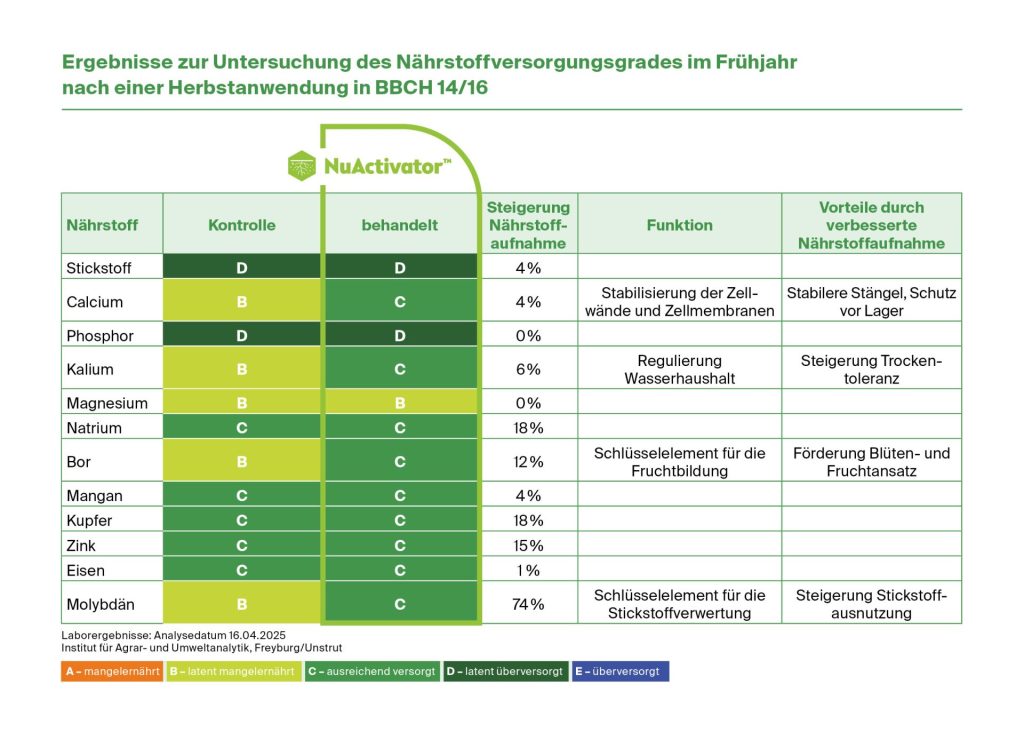In addition to nitrogen, other nutrients also play a crucial role in ensuring optimal nutrient uptake by winter rapeseed in the fall. Phosphorus, potassium, sulfur, boron, manganese, magnesium, and molybdenum are particularly important. A balanced supply of these elements lays the foundation for strong root growth, vital leaf mass, and stable yields in the following year.
What factors influence nutrient availability in autumn?
1. Soil pH
significantly influences the solubility and absorption capacity of many nutrients.
- Optimal for most crops: pH 6.0–7.0
- Too low pH → reduced availability of phosphorus, magnesium, molybdenum
- Too high pH → limited absorption of iron, manganese, zinc, boron
Practical challenge: Using nutrients efficiently
In agricultural practice, many of the factors mentioned can be positively influenced through targeted measures. However, statutory fertilizer regulations and rising prices for nitrogen and phosphorus are increasingly limiting the scope for action. This makes adapted management that optimally utilizes soil resources all the more important.
Because strong autumn development—especially in winter rapeseed—lays the foundation for high grain yields and harvest quality. Promoting root growth and balanced nutrient uptake are therefore crucial.
Biostimulants in autumn: Effect of humic substances with NuActivator
Targeted use of NuActivator in practical trials
To improve the uptake of poorly soluble or bound nutrients, a trial using the humic acid-based biostimulant NuActivator was conducted in the fall of 2024. Humic substances – extracted from high-quality leonardite – are characterized by a very high cation exchange capacity. They can mobilize nutrients fixed in the soil, such as potassium, and make them available to plants.
At the Hallbergmoos site (Freising district, Upper Bavaria), various varieties of the DK Excited variety were treated with 2.0 l/ha of NuActivator at development stages 14–16 on October 14, 2024. The efficacy was verified by leaf analysis on April 7, 2025 (development stage 50)

Leaf analyses impressively underscore this effect: In addition to nitrogen and potassium, boron and molybdenum , in particular, were taken up in significantly higher amounts. Both nutrients play a key role in cell division, root formation, and flower development in rapeseed.

Recommended use of NuActivator

